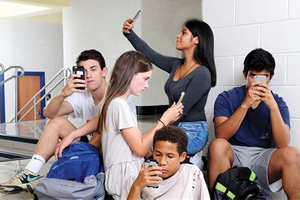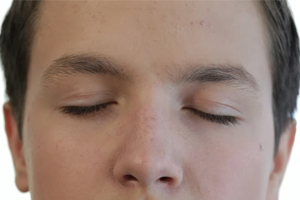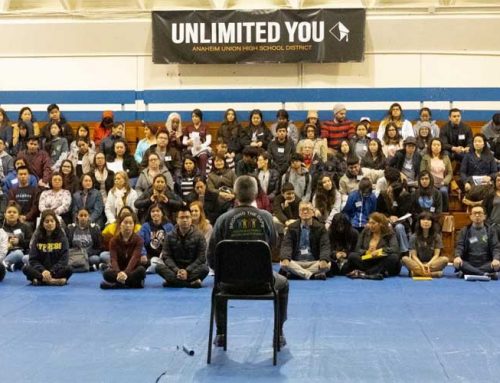Social media has become an ingrained part of our lives, and particularly in the lives of teens and young adults. In a recent study of over 10,000 teens and young adults ages 12-20, more than 60% said they could not go a whole day without checking social media. Further, 75% of participants say they check their accounts multiple times a day.
Like so many of our daily habits, the impulse to check social media, leave a comment or post a picture can happen to us without our conscious awareness. This form of automated social media usage can have some undesired effects both for ourselves and others. For one, it is very time-consuming and distracting to constantly be interrupted by notifications. Moreover, checking your phone repeatedly while being around friends and family can make them feel less of a priority, causing tension and disappointment in your personal relationships.
Another very unfortunate outcome of automated and thoughtless social media usage is posting rude and hurtful comments. What may start out as a single incident can sometimes lead to repeated negative online behavior such as trolling or cyberbullying, as the attention becomes addictive.

On the other hand, social media can be a great place to find community, to connect with friends and family, and to be inspired by positive influencers. For that to happen, however, it is imperative that we take a more deliberate approach to our online habits.
Setting time limits, having phone breaks, and turning off notifications can help you better manage your time. We have also put together a quick mindfulness practice that can help you become more aware of your intentions and emotions surrounding your social media use.

Mindful Social Media Practice
Before you log on or open your social media app, take a deep breath.
Get into a comfortable posture, let your eyes close, and turn your attention to your breath.
Sit like that for a minute, just breathing naturally.
Think about the moments when you log onto social media the most. You might check social media first thing in the morning, before going to sleep, during class or work, during time with friends, or while riding in the car.
Gently and without judgment, ask yourself what your intentions are when you log on. Are you looking to connect with others, responding to a notification, seeking validation or appreciation, feeling afraid of missing out, or hoping to distract yourself from a situation happening around you?
Once you’ve identified your intentions, focus on the body sensations and feelings you experience before logging on to social media. You might feel your heart beating faster, your palms sweaty, or a rush in your body. You might feel anxious, excited, happy, entertained, bored, angry, disgusted, sad, or depressed.
Do the same thing while you are logged on to social media, noticing your body sensations and feelings without making any judgment. Take a moment to consider the most common sensations and feelings you associate with social media.
Before you post something, take a deep breath, notice your intentions, sensations, and emotions. Ask yourself if you are sure about the post. Now think about how you feel after you’ve posted something on social media. Do you feel your heart beating faster or slower? Do you feel anxious? Excited? Proud? Nervous? Scared? If you’ve posted something that doesn’t receive enough likes or comments, do you feel regret or remorse?
Now imagine yourself logging off. What are your body sensations? What are your feelings? Did spending time on social media put you in a better or worse mood? Is there anything you would like to change in your social media habits?
Take a few more deep breaths, and slowly open your eyes and come back to the present moment.
Being mindful of your intentions, body sensations, and emotions will help you use social media more effectively. When used responsibly, social media can be a valuable tool for enhancing your life and other people’s lives. But many of us lose sight of our intentions, sensations, and emotions when using social media, instead becoming addicted to the words and images on a screen, taking us away from the present moment.
We hope you find this practice helpful in shutting off your autopilot and bringing more attention and awareness to your social media experience.




